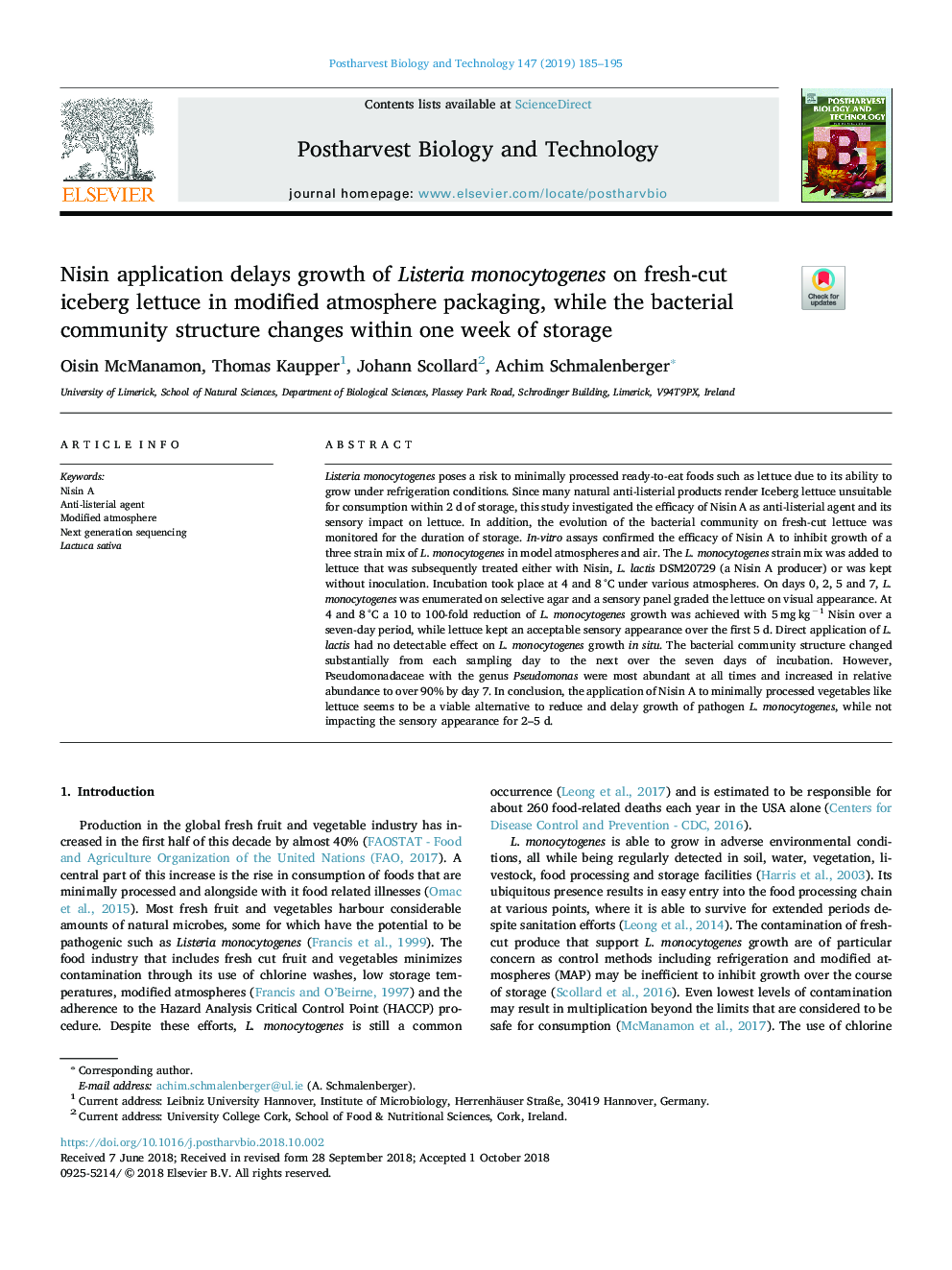| Article ID | Journal | Published Year | Pages | File Type |
|---|---|---|---|---|
| 11024951 | Postharvest Biology and Technology | 2019 | 11 Pages |
Abstract
Listeria monocytogenes poses a risk to minimally processed ready-to-eat foods such as lettuce due to its ability to grow under refrigeration conditions. Since many natural anti-listerial products render Iceberg lettuce unsuitable for consumption within 2 d of storage, this study investigated the efficacy of Nisin A as anti-listerial agent and its sensory impact on lettuce. In addition, the evolution of the bacterial community on fresh-cut lettuce was monitored for the duration of storage. In-vitro assays confirmed the efficacy of Nisin A to inhibit growth of a three strain mix of L. monocytogenes in model atmospheres and air. The L. monocytogenes strain mix was added to lettuce that was subsequently treated either with Nisin, L. lactis DSM20729 (a Nisin A producer) or was kept without inoculation. Incubation took place at 4 and 8â°C under various atmospheres. On days 0, 2, 5 and 7, L. monocytogenes was enumerated on selective agar and a sensory panel graded the lettuce on visual appearance. At 4 and 8â°C a 10 to 100-fold reduction of L. monocytogenes growth was achieved with 5âmgâkgâ1 Nisin over a seven-day period, while lettuce kept an acceptable sensory appearance over the first 5 d. Direct application of L. lactis had no detectable effect on L. monocytogenes growth in situ. The bacterial community structure changed substantially from each sampling day to the next over the seven days of incubation. However, Pseudomonadaceae with the genus Pseudomonas were most abundant at all times and increased in relative abundance to over 90% by day 7. In conclusion, the application of Nisin A to minimally processed vegetables like lettuce seems to be a viable alternative to reduce and delay growth of pathogen L. monocytogenes, while not impacting the sensory appearance for 2-5 d.
Related Topics
Life Sciences
Agricultural and Biological Sciences
Agronomy and Crop Science
Authors
Oisin McManamon, Thomas Kaupper, Johann Scollard, Achim Schmalenberger,
